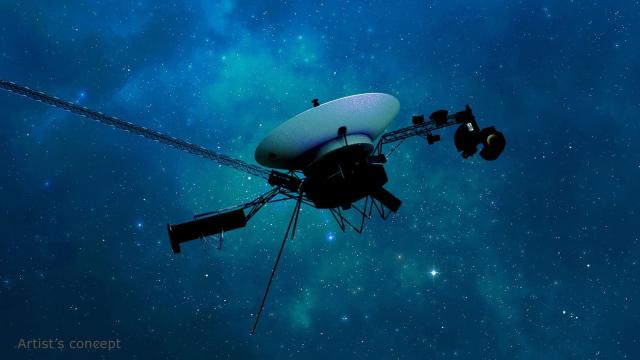NASA’s Voyager team has rolled out important measures in an attempt to further prolong the interstellar journey of the two Voyager spacecraft, which have been transmitting data from deep space since 1977.
Voyager 1 and Voyager 2 are still ticking after all these years, and NASA would very much like to keep it that way. In the latest attempt to prolong the 46-year-old mission, engineers implemented modifications to the thrusters and introduced a software patch, ensuring the Voyager spacecraft continue their unparalleled exploration of interstellar space.
The Voyager mission, comprising Voyager 1 and Voyager 2, was only supposed to last for four years, focusing on exploring Saturn and Jupiter, but NASA continually extended the missions over the years and decades. Voyager 2 was given the opportunity to visit Uranus and Neptune, making it the only spacecraft to visit these distant ice giants. Later, in the 1990s, the mission’s scope was broadened to allow both probes to venture beyond the heliosphere—a protective bubble generated by the Sun. Voyager 1 reached this outer boundary in 2012, followed by Voyager 2 in 2018.
Thruster tweak tactics
The probes continue to collect invaluable data from the solar system boundary, but engineers recently identified a troubling issue with their thrusters. These thrusters, responsible for ensuring the probes’ antennas stay pointed towards Earth, have experienced an accumulation of fuel residue within their narrow tubes—an issue also noted in a few other space vehicles, according to a NASA press release. This gradual buildup has become significant and now threatens the smooth operation of the twin spacecraft.
“This far into the mission, the engineering team is being faced with a lot of challenges for which we just don’t have a playbook,” Linda Spilker, project scientist for the mission, explained in the press release. “But they continue to come up with creative solutions.”
The mission team did in fact come up with a creative fix for the thruster issue. “The adjustments to the thruster rotation range were made by commands sent in September and October, and they allow the spacecraft to move almost 1 degree farther in each direction than in the past,” the space agency explained. Although these changes might occasionally result in data loss, they are anticipated to delay complete clogging of the tubes for at least another five years.
Cosmic software patch
Additionally, a software patch is set to address a glitch identified last year in Voyager 1’s onboard computer. The computer started delivering garbled status reports due to a misdirection in the attitude articulation and control system (AACS), which caused commands to be written into the computer’s memory instead of being executed. This new patch, serving as a precautionary measure, will ensure such glitches do not recur.
“This patch is like an insurance policy that will protect us in the future and help us keep these probes going as long as possible,” Suzanne Dodd, Voyager project manager, said. “These are the only spacecraft to ever operate in interstellar space, so the data they’re sending back is uniquely valuable to our understanding of our local universe.”
Given the vast distance—Voyager 1 and Voyager 2 are over 15 billion and 12 billion miles away from Earth, respectively—transmitting patch instructions takes over 18 hours. Owing to the potential risks associated with this update, Voyager 2 will be the first to receive the patch as a precautionary testbed for its counterpart. The upload is scheduled for October 20, and if no immediate problems are identified, the patch’s functionality will then be assessed.
Related article: NASA Power Hack Extends 45-Year Voyager 2 Mission Even Longer
Back in July, mission engineers had to contend with an unrelated issue. A series of commands inadvertently caused Voyager 2’s antenna to deviate 2 degrees from Earth, disrupting its ability to communicate with the Deep Space Network (DSN) on Earth. During this episode, the spacecraft was unable to send data to or receive data from our planet. In early August, after the DSN facility in Canberra, Australia sent a command instructing Voyager 2 to reposition its antenna, full communications were successfully restored.
That NASA continually finds ways to extend these missions is truly remarkable, making it possible to keep gathering unprecedented data from the edge of our solar system. That said, Voyager 1 and 2 won’t last forever, with NASA expecting the probes to keep working into the back half of the 2020s.
